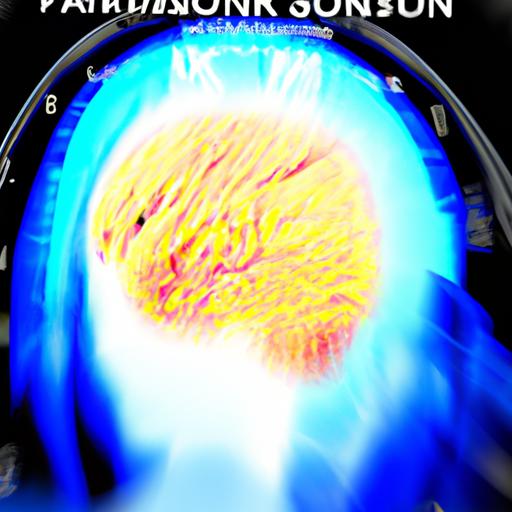What is Parkinson’s Disease?
Parkinson’s disease is a progressive neurological disorder that affects the brain’s ability to control movement. It is one of the most common neurodegenerative disorders, with approximately 10 million people affected worldwide. The condition is caused by the loss of dopamine-producing cells in the brain, which leads to a decrease in dopamine levels and the development of motor symptoms.
Definition of Parkinson’s Disease

Parkinson’s disease is a chronic and progressive movement disorder that affects the central nervous system. The condition is characterized by a variety of symptoms, including tremors, rigidity, bradykinesia (slowness of movement), and postural instability. These symptoms often develop gradually over time, and their severity can vary from person to person. Parkinson’s disease can also cause non-motor symptoms, such as depression, anxiety, sleep disturbances, and cognitive impairment.
Parkinson’s disease is most commonly diagnosed in people over the age of 60, although it can affect younger people as well. Men are also more likely to develop Parkinson’s disease than women. While there is currently no cure for Parkinson’s disease, there are various treatment options available that can help manage the symptoms and improve quality of life.
Causes of Parkinson’s Disease
The exact cause of Parkinson’s disease is still unknown, but there are several factors that have been identified as potential contributors to the development of the condition. These include genetic factors, environmental factors, and risk factors.
Genetic Factors
Research has shown that there is a genetic component to Parkinson’s disease, with several genes linked to an increased risk of developing the condition. However, genetics alone are not enough to cause Parkinson’s disease, and other factors are also involved.
Environmental Factors
Environmental factors may also play a role in the development of Parkinson’s disease, although the exact mechanisms are not well understood. Exposure to certain toxins, such as pesticides and herbicides, has been linked to an increased risk of developing the condition. Other environmental factors, such as head injuries, may also contribute to the development of Parkinson’s disease.
Risk Factors
Several other risk factors have been identified as potential contributors to the development of Parkinson’s disease. These include age, gender, and family history of the condition. People who have a history of head injuries, depression, or anxiety may also be at a higher risk of developing Parkinson’s disease.
Diagnosis and Treatment of Parkinson’s Disease
Diagnosis of Parkinson’s disease is based primarily on clinical symptoms, as there is no definitive test for the condition. A neurologist will perform a thorough physical examination, including tests of movement, balance, and coordination. Imaging tests, such as MRI or CT scans, may also be used to rule out other conditions that may cause similar symptoms.
Treatment of Parkinson’s disease is focused on managing the symptoms and improving quality of life. There are several medications available that can help increase dopamine levels in the brain, which can improve motor symptoms. Physical therapy and occupational therapy can also help improve movement and reduce the risk of falls. In some cases, surgery may be recommended to implant a device in the brain that can help control motor symptoms.
Rehabilitation and therapy are important aspects of Parkinson’s disease treatment, as they can help improve mobility, reduce the risk of falls, and improve overall quality of life. Speech therapy may also be recommended to help improve communication skills, as Parkinson’s disease can affect speech and swallowing. It is important for people with Parkinson’s disease to work closely with their healthcare team to develop a personalized treatment plan that meets their individual needs and goals.
Living with Parkinson’s Disease
While Parkinson’s disease can be challenging to live with, there are various coping strategies and lifestyle modifications that can help manage the symptoms and improve quality of life. Here are some tips for living with Parkinson’s disease:
Coping Strategies
-
Stay active: Regular exercise can help improve mobility, balance, and flexibility. Exercise can also help reduce the risk of falls and improve mood.
-
Seek support: Joining a support group or talking to a therapist can help you cope with the emotional impact of Parkinson’s disease. It can also provide helpful tips for managing symptoms and navigating daily life.
-
Practice stress-reduction techniques: Parkinson’s disease can be stressful, and stress can exacerbate symptoms. Practicing relaxation techniques like meditation, deep breathing, or yoga can help manage stress and promote relaxation.
Lifestyle Modifications
-
Eat a healthy diet: A healthy diet rich in fruits, vegetables, lean protein, and whole grains can help manage symptoms and promote overall health.
-
Get enough sleep: Lack of sleep can exacerbate symptoms of Parkinson’s disease. Establishing a regular sleep routine and practicing good sleep hygiene can help improve sleep quality.
-
Make home modifications: Simple modifications to your home, such as installing grab bars or removing tripping hazards, can help reduce the risk of falls and make daily life easier.
Support Groups and Resources
-
Parkinson’s Foundation: This organization provides resources and support for people living with Parkinson’s disease, including educational materials, support groups, and a helpline.
-
Michael J. Fox Foundation: The foundation provides information, resources, and funding for Parkinson’s disease research and advocacy.
-
Davis Phinney Foundation: This organization offers resources and support for people living with Parkinson’s disease, including exercise programs and educational materials.
Conclusion
Parkinson’s disease is a complex and challenging condition, but with the right strategies and support, it is possible to manage symptoms and maintain a good quality of life. Early detection and management of Parkinson’s disease are crucial for improving outcomes and reducing the impact of the condition. By staying active, seeking support, and making lifestyle modifications, people living with Parkinson’s disease can improve their health and well-being. At Zahnweiss Info, we are committed to providing the latest updates and resources on Parkinson’s disease and other neurological conditions to help you live your healthiest life.




